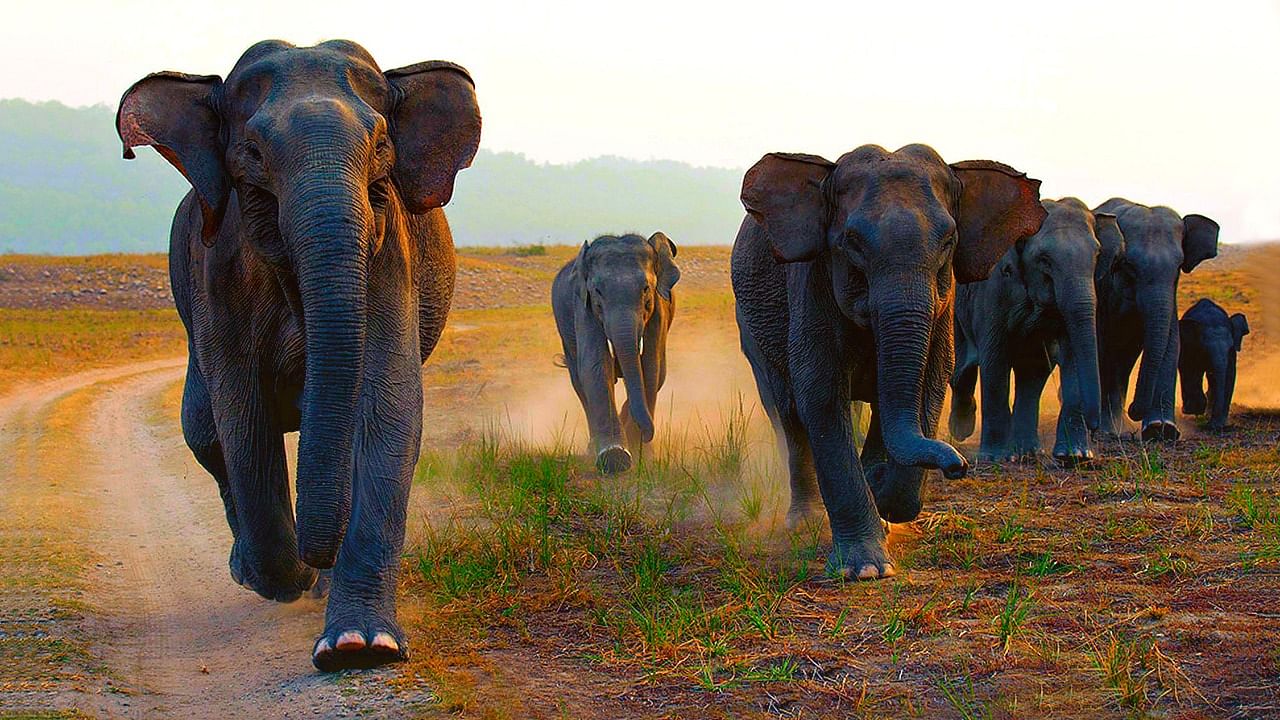
As a natural phenomenon, droughts are remarkable; they shape landscapes and civilisations and etch their mark on our societies. Studies show that megadroughts in Africa, which occurred between 135,000 and 90,000 years ago, forced humans to spread out of the continent to other parts of the world. In the Arabian peninsula, droughts in the sixth century paved the way for the formation of Islam as a religion.
While humans can cope with drought to some extent, the worst affected are animals in the wild. As their food resources deplete without water, they move in search of food, and rely on whatever they can get, even if that means coming dangerously close to human habitation, or drinking water from contaminated waterholes.
In 2012, Karnataka faced its worst drought in nearly half a century, forcing wild animals in the state’s forests, including the jumbos, to succumb to the perils of the drought. Now, a new study published in the Journal of Threatened Taxa finds that a lack of nourishing food and thirst-quenching good quality water can make some elephants easy targets for deadly infections.
“When the forest receives good rainfall, there is an abundance of fodder and water, and animals can resist or fight microbes commonly present in water,” says Dr B M Chandranaik, a veterinarian at the Institute of Animal Health and Veterinary Biologicals, Bengaluru, and the lead author of the study. “But when there is drought, their body condition becomes poor and they possibly become immunologically weak.”
An adult elephant needs 225 litres of water and 140 kgs of food every day, and more prone to problems. In 2019, a severe drought in Zimbabwe killed more than 200 African elephants and forced the relocation of over 600 to keep them alive. Studies have shown that young males, pregnant females and calves are particularly sensitive to droughts, and herds that exactly know where to find water—a piece of vital information locked in the memories of the matriarch—would be the ones to survive.
Studying water-level and infections
To help animals survive during water-scarce days, many parks around the world rely on supplying additional water to the waterholes or constructing artificial ones. However, during drought, the water is often contaminated with animal poop, birds and insects bringing in microbes, or from other ecological activities like nitrification, making it potentially life-threatening for drinking. Yet, we don’t exactly know how poor quality water riddled with microbes affects wild animals. Chandranaik’s study is the first to assess what worsens water quality during different seasons of the year and its possible impacts on wild animals.
“Acute scarcity of water during a drought is the main reason for the chain of events that ultimately end up in animal mortality,” explains Chandranaik, who has investigated wildlife diseases throughout his career, including elephant mortalities in Karnataka. “Poor microbial water quality is not the only reason why elephants die during drought, it’s just one of several other reasons.”
Chandranaik and his colleagues collected water samples from 20 waterholes in Nagarhole and Bandipur forests during the drought year 2012, and during 2014-2015 when the rainfall was normal. Each month, for the summer, winter and rainy seasons, they analysed the collected samples to look for microbes.
During the drought year, some of the waterholes had dried up and the water in others was mouldy, greenish and had heaps of elephant dung. The sample analysis revealed many microbes, including vibrio cholerae (cholera-causing bacteria), Salmonella (bacteria affecting the intestinal tract), Klebsiella, Shigella (diarrhoea-causing bacteria), campylobacter and others. These microbes are known to cause common water- and food-borne infections. There were also eggs of parasites like Fasciola (which affects the liver) and Strongyles (nematode worms). Interestingly, the water samples had similar microbial content during the normal-rainfall year.
The researchers collected organ samples of 39 elephants that died during April and May of 2012 to analyse what exactly caused their deaths and how that could be related to bad water quality. The autopsies showed signs that the jumbos had died of enteritis, empty bowels, intestinal worm infestation and hepatitis. Out of the 12 bone marrow samples analysed, nine had E.coli, Salmonella, Shigella and Klebsiella. In the normal-rainfall year, less than 10 elephants had died in the entire year, as opposed to 39 during the two months of the drought year.
'No change in water quality'
“Our study shows that the microbial quality of water doesn’t change during the summer months of the drought year and normal-rainfall year,” says Chandranaik. “The probable difference is in the elephants’ ability to fight these infections.”
The researchers posit that as the grass had dried up and shrubs were destroyed due to wildfires during the drought, elephants had starved for a long time, were poorly nourished and had weak immunity. Due to the water scarcity, they were forced to drink the contaminated water from the waterholes. In years with normal rainfall, the elephants would be healthy and have enough immunity to fight these common bacteria. However, their compromised immunity during drought made them susceptible to infections, leading to painful deaths.
To prevent such animal deaths, the researchers suggest clearing shrubs in and around major waterholes that prevent the flow of water, filling up a few waterholes with water brought in by tankers when the water is scant, constructing small artificial water tanks for smaller animals and installing solar-powered borewells to draw water in the forests. “Drought is a natural phenomenon and we cannot stop it,” says Chandranaik, “The forest department can use one of these approaches or a combination of them, taking into consideration the local conditions.”